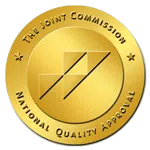
Panic attacks are sudden and scary, especially if you’ve experienced one before. Understanding a panic attack can help manage symptoms and prevent future episodes.
Keep reading to answer “What is a panic attack” and discover how it can be managed and treated!
What is a Panic Attack?
Panic attacks are sudden and unpredictable, causing terror, dread, and fear.
Panic disorder, characterized by recurrent panic attacks, can severely impact a person’s quality of life, affecting daily activities, relationships, and overall well-being.
Are Panic Attacks and Panic Disorders the Same?
While panic attacks can occur in individuals without panic disorder, experiencing recurrent and unexpected panic attacks is a hallmark of the condition.
It is essential to differentiate between occasional panic attacks and panic disorder, as the latter requires treatment to manage and prevent future episodes.
To be diagnosed with panic disorder, a person must meet DSM-5 criteria, including recurrent panic attacks, a month-long persistent concern about having more episodes, and significant maladaptive behavior changes.
How Common is Panic Disorder?
Panic disorder is quite common, affecting millions of people worldwide.
According to the National Institute of Mental Health (NIMH), approximately 2.7 percent of adults in the United States experience panic disorder in a year.
Panic disorder is twice as prevalent among women than men, with onset typically occurring during late adolescence or early adulthood.
What are Common Symptoms of a Panic Attack?
Typically, a panic attack lasts for several minutes, although it can sometimes feel like it lasts much longer.
Although panic attack symptoms tend to differ among individuals, they often include:
Rapid Heartbeat
One of the most common panic attack symptoms is an increased heart rate or palpitations.
This can make the individual feel like their heart is pounding or racing.
Shortness of Breath
Many people experience difficulty breathing during a panic attack, which can lead to feelings of suffocation or choking.
Dizziness or Lightheadedness
Panic attacks can cause dizziness and lightheadedness, making it difficult for the individual to maintain balance or focus on their surroundings.
Chest Pain
Chest pain or discomfort is another common symptom of a panic attack, which can sometimes be mistaken for a heart attack.
Sweating, Trembling, or Shaking
During a panic attack, individuals may experience excessive sweating, uncontrollable shaking, or trembling.
Nausea or Stomach Pain
For some individuals, physical symptoms can accompany panic attacks, such as nausea or discomfort in the abdominal region.
This can manifest as tightness or squeezing sensation in the stomach.
Feeling Detached from Reality
Panic attacks can cause a sense of depersonalization or derealization, making the individual feel disconnected from themselves or their surroundings.
Fear of Dying or Losing Control
Panic attacks can cause intense fear, as the individual may think they are about to die or lose control.
What Triggers Panic Attacks?
Although the exact cause of panic attacks remains unknown, it is believed that specific situations or events can trigger them.
Common triggers include:
- Stressful life events such as relationship problems and job loss
- Traumatic experiences such as abuse or a traumatic event
- Physical conditions such as high blood pressure or hyperthyroidism
- Certain drugs, medications, and caffeine have the potential to serve as triggers
What is the Treatment for Panic Attacks and Panic Disorder?
Treatment for panic disorder usually involves medications, psychotherapy, or both.
Seek professional help immediately if you experience any of the above symptoms.
Treatment options may include:
- Cognitive-behavioral therapy (CBT) teaches individuals coping strategies and how to manage their anxiety
- Medication, such as antidepressants or antipsychotics, can reduce the frequency and intensity of panic attacks
- Exposure therapy, which helps individuals face their fears in a safe environment
- Support groups to connect with people who understand what you’re going through and provide support
How Can You Prevent Panic Attacks?
Implementing certain lifestyle changes can potentially decrease the frequency and severity of panic attacks.
These include:
- Reducing stress
- Avoiding triggers
- Engaging in regular aerobic exercise
- Eating a healthy diet
- Getting enough sleep
- Limiting alcohol intake
- Avoiding caffeine late in the day
Relaxation techniques like deep breathing, visualization, and muscle relaxation often ease anxiety. Yoga, meditation, and tai chi also reduce stress and prevent panic attacks.
Prevail Recovery Center Offers Panic Attack Treatment in South Florida
At Prevail Recovery Center, we can help you find relief from your panic attacks and take control of your life.
Our experienced team helps you manage panic attacks through tailored treatment programs, including medication-assisted therapy, animal-assisted therapy, relaxation techniques, and more.
We personalize care from start to finish, empowering you to manage anxiety effectively with knowledge and tools.
Please contact us today if you’d like to learn more about our panic attack therapy. We eagerly anticipate assisting you on your path toward a healthier and happier life!





certainly like your website but you need to take a look at the spelling on quite a few of your posts. Many of them are rife with spelling problems and I find it very troublesome to inform the reality nevertheless I will definitely come back again.